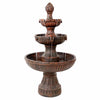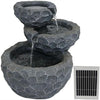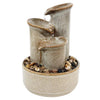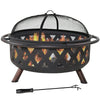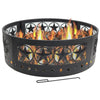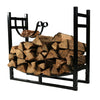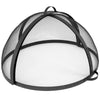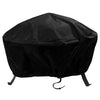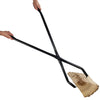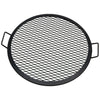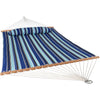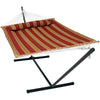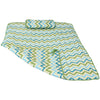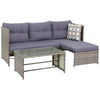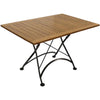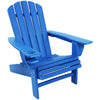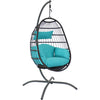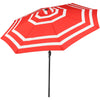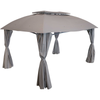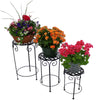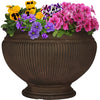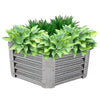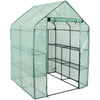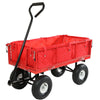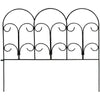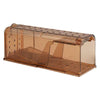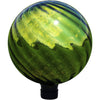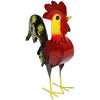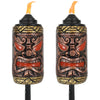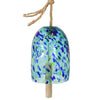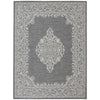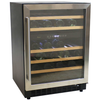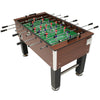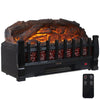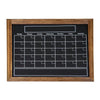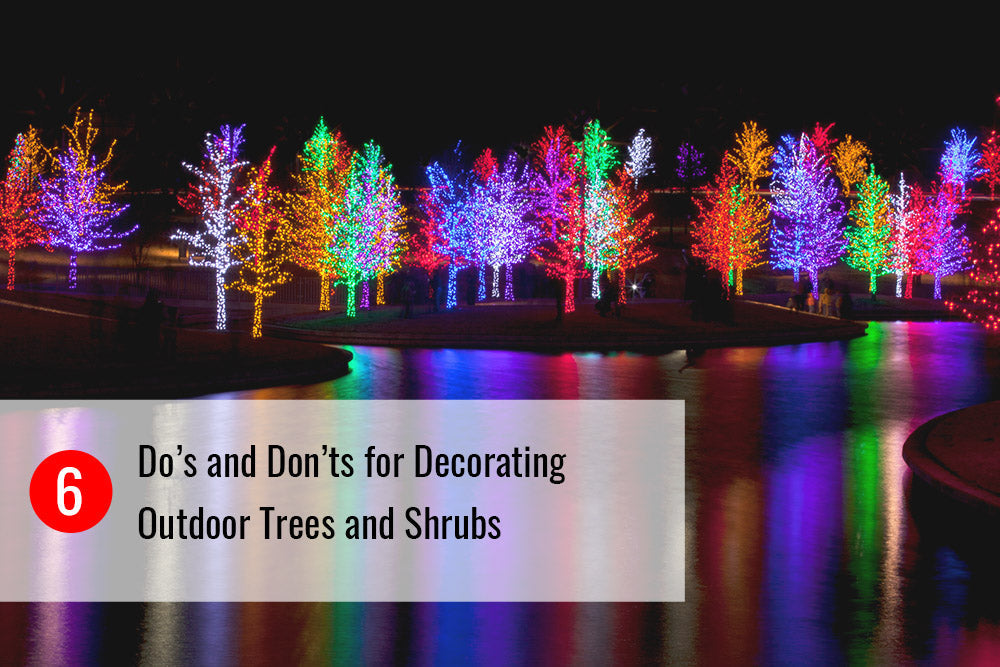It might have come as a surprise that there are so many options for buying wooden patio furniture.
Suddenly you're not just concerned with aesthetics. Now you must decide about what type of tree your new decor came from.
Teak, chestnut, acacia, cedar, meranti, poplar, tentu, fir, shorea, pine, redwood... There are so many options that you probably didn't notice that tentu isn't a real wood or that meranti and shorea are the same tree.
Not all woods are created equal. Even within the same species, there can be quality grades that complicate matters even more. That's why we've made this handy guide to help you choose the material that's right for you.
We can't go over all the types of wood you might encounter without this turning into an encyclopedia, so we'll cover some of the more exotic/uncommon woods you might not be familiar with.
If you're curious about one we didn't cover, just pop your question in the comment section below.
Factors to Consider
Making the right decision about wood type first requires you to consider the conditions your new furniture will be subjected to. Here are a few things to think about:
- Location: Where will your furniture spend most of its time? Will it be exposed to long periods of direct sunlight or precipitation?
- Climate: Humidity or frequent inclement weather can affect the durability of your patio decor, as does extreme variations in temperature.
- Usage: Some woods can take a beating while others show wear and tear quickly.
- Sustainability: Where did the wood come from and was it harvested responsibly?
- Affordability: Will your use of the furniture warrant spending more for a wood that can handle it? Maybe your furniture will be more sheltered, and you don't need to pay a premium for weather resistance.
With these in mind, let's look at a few of the most common species of wood used in outdoor furniture.
Teak

Often considered the gold standard for outdoor furniture, teak has become known for its exceptional water resistance, stability, and strength.
The oils within the wood repel water and prevent decay while the dense grain provides exceptional durability and strength. Teak oil is often used to treat other types of wood to confer some of this wood's natural beauty and water resistance.
- Durability: Grade A - Exceptional. Grade C - Poor.
- Weather Resistance: Grade A - Exceptional. Grade C - Poor.
- Sustainability: Almost all teak used in manufacturing is sourced from carefully managed plantations.
- Affordability: Quality comes at a price. Expect to pay more for high-quality teak. Be wary of prices that seem too good to be true. Low-quality teak is less durable than most other species of wood.
Grades of Teak
You might read the above and immediately jump to the decision that teak is what you want and begin narrowing your search. However, there's a very important distinction for teak furniture that you need to consider before making your final decision.
Teak is graded in three tiers based on where in the trunk it was milled. The closer to the center of the log the planks are cut from the more uniform their color, the glossier they are, and the denser the grain and oil content.
- Grade A teak comes from the very center of the tree, referred to as the heartwood, and is the highest-grade wood.
- Grade B makes up the next 25-35% of the log next to grade A wood. It has a lighter and less consistent color than grade A, more inconsistent grain, and a much lower concentration of teak oil which causes unfinished grade B teak to be vulnerable to outdoor conditions.
- Grade C is made from the remaining outer section of the log. It is recognizable by its very inconsistent color and wavy or knotty grain.
Chestnut

Chestnut is characterized by its light to medium color and coarse grain. There are a few species of chestnut.
Typically, unless otherwise specified, chestnut refers to American Chestnut, a species of wood that was nearly wiped out by chestnut blight in the early 1900s. Sustainable foresting and plantations have allowed the tree to make a big comeback, and many of the 3 billion trees lost to blight are still being harvested although often with signs of insect damage.
European, or "Sweet," Chestnut wasn't affected by blight and has been a reliable source of quality wood for centuries.
All species of chestnut have excellent applications for outdoor uses where durability and weather resistance are necessary.
- Durability: Very good.
- Weather Resistance: Good if unfinished. Very good with surface finishes.
- Sustainability: No species of chestnut commonly used in manufacturing is currently considered threatened.
- Affordability: Price varies based on species and origin but is a highly sought-after wood for its reliability and therefore prices are higher than some other options.
Meranti/Shorea

Meranti, sometimes called Philippine Mahogany, is classified as an exotic wood known for deep red or slightly purple hardwood that has been gaining in popularity recently.
It's color and grain patterns are characteristic of other species of wood that are typically much more expensive. When finished it can be used to create beautiful furniture for areas that won't be subjected to exceptionally harsh weather.
- Durability: Good.
- Weather Resistance: Fair if unfinished. Good with proper finish.
- Sustainability: Buying from responsible manufacturers is important. Some species of Meranti have been over-harvested recently. Ensure your manufacturer sources their lumber from sustainable sources or plantations.
- Affordability: Meranti is reasonably priced despite being an exotic imported wood.
Acacia

Acacia is a group of hundreds of species of trees and shrubs. The diversity of Acacia trees leads to an equally diverse range of colors and grain patterns.
Similarly, you'll find applications of Acacia wood everywhere from the kitchen to the backyard and even the marina. For the sake of this article, we'll be making generalizations on the common species used in outdoor furniture.
- Durability: Very good.
- Weather Resistance: Good, but requires care to avoid swelling/cracking due to moisture absorption. Surface finishes are often used to make Acacia very good at repelling water.
- Sustainability: Australia considers some species of Acacia as an invasive species which makes harvesting them beneficial to the Australian ecosystem. Other species are carefully managed for sustainable harvesting either in the wild or on plantations throughout the world. Sunnydaze supports the use of FSC and LEEDs certified wood.
- Affordability: Acacia furniture's price depends on the source and quality of the lumber used, but is generally more affordable than teak and more exotic woods.
Which to Choose
There's a lot of information here, so how do you make the right choice? Here's a quick recap:
- Teak - Best all around for outdoor applications, but comes at a premium.
- Chestnut - An elegant and durable wood that's a great alternative to teak.
- Meranti - The visual appeal of expensive woods without the cost, but doesn't handle extreme weather well.
- Acacia - Affordable, durable, and time-tested. A great choice for all but the harshest outdoor conditions.
